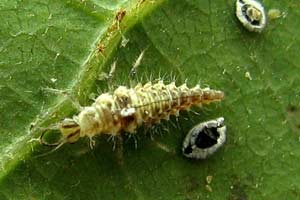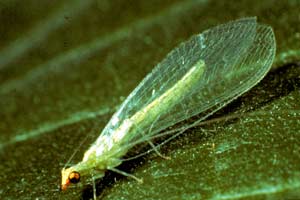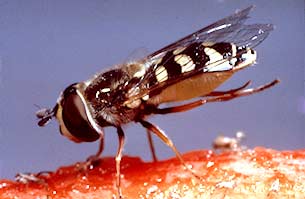The Green Lacewing - Predator Extraordinaire!

This little bug really cleans up the pests
Green lacewing larvae are voracious general predators; they will attack almost anything that moves, including each other.
Like the robot in The Terminator, they are “...relentless, remorseless, without pity, and they will not stop…”.
With long, sharp, hollow mouth-parts like hypodermic needles, they impale their prey and suck out all their body fluids. When finished, they toss the husk of their prey into the air and grab another one. This continues until the lacewing larva is bloated and finally sated, at which point it rests and digests until it is ready to start the process again. In this way the green lacewing reduces the population of pest insects on your plants.
 Releasing the Green Lacewing in your garden
Releasing the Green Lacewing in your garden
The delicate lacewing adult feeds only on nectar and pollen, only the larvae are predaceous. However, since you buy the green lacewing as eggs, the larvae stay near where you place them – they have to find food or die trying. Newly hatched larvae can walk 100 feet before dying of starvation; most plants host many types of arthropods, so the young lacewing usually can find a meal before they run out of steam.
The lacewing female is stimulated to lay eggs when she finds honeydew. She will lay eggs singly or in groups of up to 20, usually on the underside of a leaf. The eggs are laid on a stalk about ¾ inch long, which keeps the eggs separate from each other. If they were laid directly on the leaf surface, the first one to hatch would begin eating the eggs containing its brothers and sisters. We avoid this on our lacewing card by providing non-viable moth eggs for the new hatchelings.

